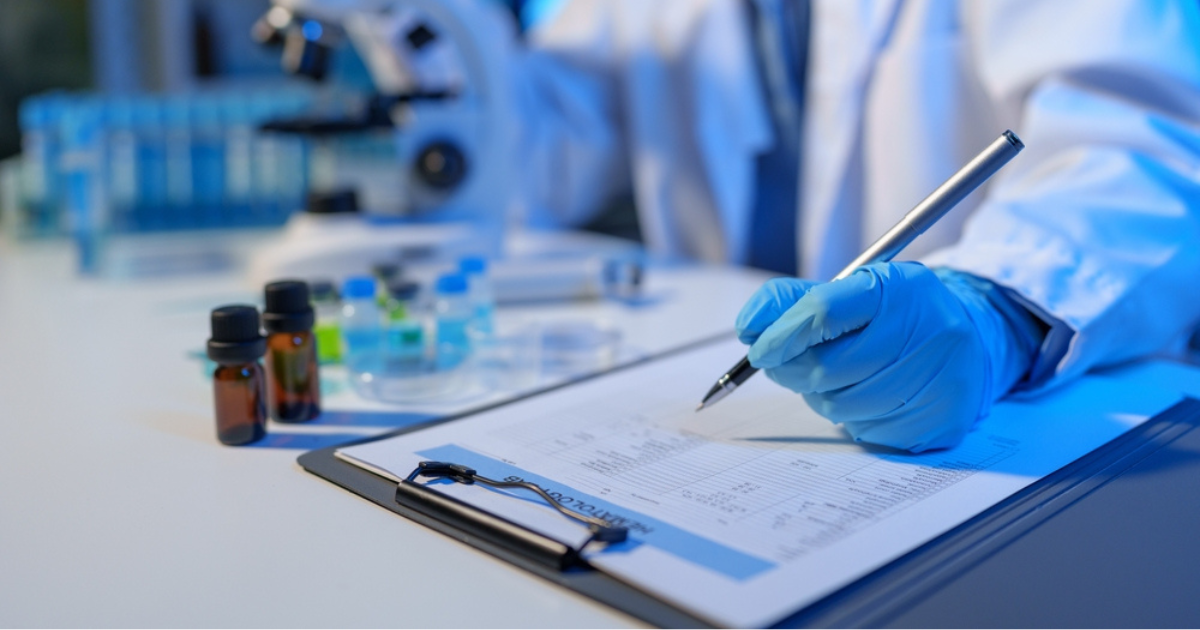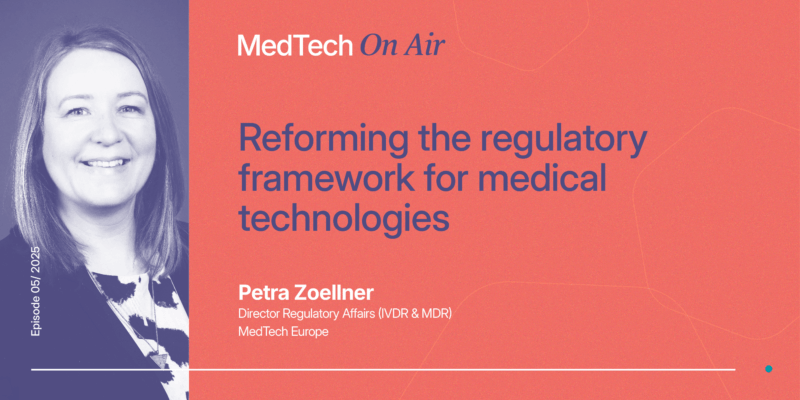
IVDR reforms: an opportunity to create a system fit for the future

Review of EU rules can deliver a sustainable regulatory framework
The targeted evaluation of EU regulations on in vitro diagnostics (IVDs) is a second chance to develop a system that works for patients, health systems and manufacturers. Developing the current In Vitro Diagnostic Regulation (IVDR) was a complex task, in which the industry actively engaged, but there is a general sense that the resulting rules have not worked as anyone had hoped. Key concerns centre on the efficiency of the system, timelines and predictability.
As someone who works in regulatory policy at a global company, I have seen how uncertainty and the lack of a fully functioning regulatory system can disrupt innovation and put the speed of supply of vital diagnostics at risk – from cancer tests to digital applications. Reforms are, without doubt, needed, as also reflected in MedTech Europe’s vision for ‘an efficient, innovation-focused, and well-governed regulatory framework’.
I am also acutely aware that, in the years since the IVDR was introduced, our sector has advanced at pace, with new categories of technology that can transform patients’ lives and make health systems more efficient. We’ve been through a pandemic and seen the integration of artificial intelligence (AI) in diagnostic processes, as well as advances in clinical chemistry and molecular testing.
When thinking about how to improve our regulations, it is crucial that we adapt not only to the latest technologies, but that we consider how our rules will apply to the innovations of tomorrow.
Wanted: a holistic approach to reforms
We are conscious of the acute need to resolve roadblocks and tweak aspects of the regulatory system that prevent parts of the diagnostic sector from moving their products and processes into IVDR compliance. A big pain point, it is generally agreed, has been limitations in how EUDAMED operates, without which the system simply cannot function as intended.
At the same time, as an ‘early adopter’ of the IVDR, our experience is that several aspects of the Regulation can work, if implemented well. It’s essential to maintain a balanced approach, ensuring we retain the valuable elements of IVDR while making necessary refinements. We should resist the temptation to throw the baby out with the bathwater and keep the IVDR public health goals in mind.
In any case, every organisation working in the IVD sector could benefit from clarity around the timeline and scope of regulatory reforms. Operating, as many global firms do, on five to ten year horizons, our challenge (I suspect here we have a shared one with regulators!) is to keep the short- and long-term perspectives in mind at the same time.
We would like to see the upcoming changes as the first steps in a wider reimaging of our regulatory system. This wider reimaging means thinking broadly. Consider the critical role diagnostics play in clinical research for new treatments! The way that the IVDR has been implemented has caused roadblocks in research, which are extremely worrying.
As a stakeholder with IVDs, medical devices and pharmaceuticals under the same roof – we contribute to the policy discussions and working groups on these matters, and while we see a willingness to resolve the issues, we remain concerned.
Reforming in the digital era means that sectoral legislation such as IVDR must seamlessly coexist with emerging digital, pharmaceutical and sustainability regulations in the EU.
Understanding the global repercussions
I’m part of a team that has invested heavily in making the IVDR work. In the process, we have made a huge effort in collaborating with our partners to ensure we meet all regulatory expectations while aiming to minimise disruption to supply. The impact of the Regulation’s implementation went far beyond Europe.
We manufacture a wide variety of diagnostics for use across multiple jurisdictions, including several countries outside the EU where authorities treat the CE mark as a trusted endorsement of safety and conformity. However, the product labelling changes arising from the IVDR had a knock-on effect on global supply, requiring significant planning and coordination to ensure that products meet the specific labelling requirements needed for each market.
It also became very clear that any uncertainty or delays in implementing new regulations in Europe will have an impact on this trust in our system. We want to ensure that the next cycle of regulatory reform brings an approach which not only looks at European needs, but maintains the excellent trust that CE-marked medical devices and IVDs enjoy across the world.
Long-term thinking
Ensuring compliance across a wide range of products is a complex and demanding task. We welcome efforts to address shortcomings with how the current legislation is applied, but we also caution against rushing through ‘quick fixes’ in an effort to deliver on a political priority.
While we fully support addressing acute problems so that the entire IVD sector can thrive, we want to see reforms that deliver a long-term, sustainable regulatory system. These should build on what’s working in the current system while carefully introducing changes based on robust impact assessment and a ‘360°’ outlook.
At all times, our focus should be on prioritising patients. That patients continue to receive timely access to safe, high-quality diagnostics is the goal behind the three pillars we need to support in the regulatory system: efficiency, innovation and governance.
Let’s work together to get the system right this time.










